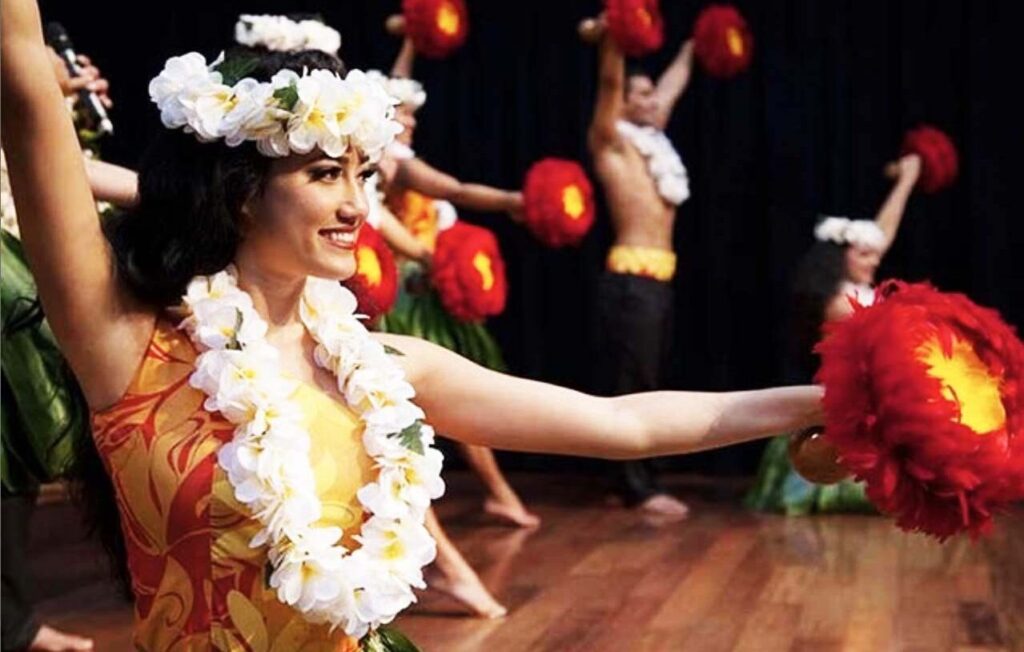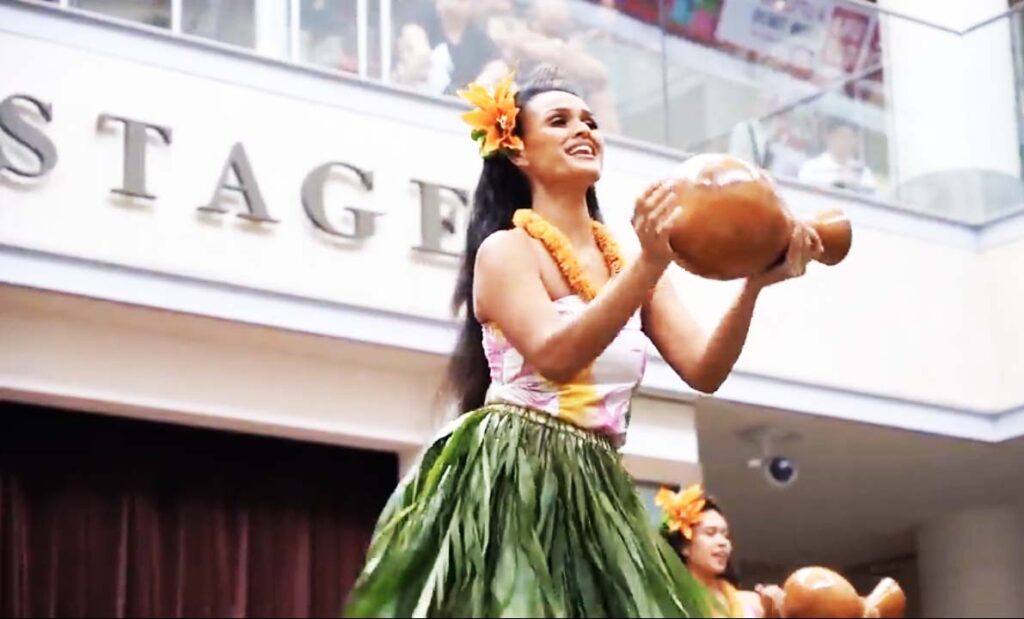Unveiling the Hip-Swaying, Storytelling Magic of Hula Hands and Coconut-Chic Costumes in Hawaii’s Cultural Extravaganza
It’s National Hula to the Coola Day, so what could be better than sharing information about Hawaii’s enchanting Hula dance. Afterall, it is a captivating cultural expression deeply rooted in the islands’ history and traditions. Dating back centuries, this ancient dance form tells stories of nature, love, and mythology through graceful movements and hand gestures known as “hula hands.”
Divided into two main types, Hula Kahiko, and Hula ‘Auana, the dance is accompanied by vibrant costumes, traditional instruments like the ukulele and percussion, and implements such as gourd drums and lava stones. Beyond its entertainment value, Hula holds profound cultural significance, preserving and sharing the rich heritage of the Hawaiian people. As dancers gracefully mimic nature’s elements, the dance becomes a tribute to the islands’ lush landscapes.
Whether performed at festivals, in hula schools, or on the sandy shores of Hawaii, this rhythmic art form continues to weave a tapestry of stories, colors, and traditions that celebrate the spirit of aloha.
Here are some fun facts about the Hawaii Hula dance:

- Ancient Tradition: Hula is an ancient Hawaiian dance form practiced for centuries. It has deep roots in the culture and history of the Hawaiian people.
- Expression of Stories: Hula is not just a dance but a form of storytelling. Traditional Hula often tells stories about nature, love, and mythology through graceful movements and gestures.
- Instruments: Traditional Hula is accompanied by various instruments, including the ukulele, guitar, and traditional Hawaiian percussion instruments like drums and rattles.
- Hula Implements: Dancers often use implements like the ipu (gourd drum) and ili’ili (water-worn lava stones) to enhance their performances. These implements add rhythmic elements to the dance.
- Two Main Types: There are two main types of Hula: Hula Kahiko (ancient Hula) and Hula ‘Auana (modern Hula). Hula Kahiko is more traditional, while Hula ‘Auana incorporates modern influences.
- Costumes: The costumes worn during hula performances are vibrant and colorful. They often include traditional garments such as grass skirts, leis, and other accessories.

- Respect for Nature: Many hula dances pay homage to nature and the environment. Dancers often incorporate movements that mimic natural elements, such as the swaying of trees or the flow of water.
- Cultural Significance: Hula is not just a form of entertainment; it holds deep cultural significance for the Hawaiian people. It is considered a way of preserving and sharing their history and traditions.
- Hula Festivals: Hawaii hosts annual festivals where dancers from different islands and worldwide come together to showcase their skills and celebrate the art form.
- Hula Schools: There are schools dedicated to teaching Hula, where students learn the dance movements and the cultural and historical context behind each dance.
- Hula Hands: In traditional Hula, hand movements are crucial and are known as “hula hands.” Dancers use their hands to convey specific meanings and emotions, adding depth and nuance to the storytelling aspect of the dance. Each hand gesture, or “mudra,” has a distinct significance, and skilled hula dancers are adept at expressing a wide range of emotions through the intricate movements of their hands. The art of hula hands is a beautiful and essential element of the dance, showcasing the precision and cultural richness of this traditional Hawaiian art.
These are just a few aspects of the vibrant tradition of Hula in Hawaii. The dance continues to be an integral part of Hawaiian culture and is celebrated locally and globally.
Did you know?
In traditional Hula, the swaying motions of the dancers not only mimic natural elements but also serve the practical purpose of helping to keep mosquitoes away, creating a dance that is both artistic and functional.
A little history:
The history of Hula is deeply intertwined with the rich cultural tapestry of Hawaii. Originating from Polynesian migration to the Hawaiian Islands, Hula has ancient roots that trace back over a thousand years. Initially, Hula served as a sacred ritual to honor deities, celebrate significant events, and convey the stories of Hawaiian mythology and genealogy.
With the arrival of Western missionaries in the 19th century, Hula faced suppression due to its perceived association with paganism. However, in the late 19th and early 20th centuries, efforts to revive and preserve Hawaiian culture led to a resurgence of interest in Hula. Queen Lili’uokalani, the last monarch of Hawaii, played a pivotal role in this cultural revival.
photos: @alamoanacenter instagram



